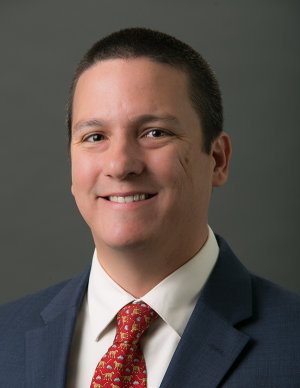Making Deceptive Moves
Assistant Professor Mark Grimes' Research Suggests Mouse Movements Show Deception
Published on September 26, 2019
“Oh, what a tangled web we weave when first we practice to deceive.”
“Liar liar, pants on fire.”

Assistant Professor Mark Grimes
Deception, an age-old problem, has inspired colorful expressions over the years. But the latest twist in uncovering deception may prove challenging to modern scribes.
Research from Bauer College Assistant Professor Mark Grimes suggests that a computer users’ mouse movements leave a metaphoric trail of smoke when that user is being less than truthful.
The Department of Decision and Information Sciences faculty member is a coauthor of a new study that shows technology may hold the key to more transparent online interactions.
The researchers devised a laboratory experiment in which a randomly chosen group was given instructions to steal a file containing credit card numbers from a computer. Another group received a set of similar instructions that didn’t involve theft or other nefarious activity.
All 66 participants were informed about the theft and told they were a suspect. Experiment facilitators then administered a Concealed Information Test (CIT), a well-established measure of truth-telling often used with lie detector tests. The researchers measured the response activation time and movement trajectories for answering baseline and key questions and found people concealing information moved the mouse in a less precise manner and were significantly slower to answer key questions than on baseline questions. Subsequent testing using a polygraph corroborated the initial findings. The work builds upon well-established research that found people being deceptive take significantly longer to respond to key questions.
The technique performs at a similar, if not better level than a traditional polygraph, Grimes said. But polygraph tests, which measures physiological responses such as respiration and heart rate, can take considerable time and expense to set up. They also require a person to administer the test and interpret the results, thus increasing the potential for bias, Grimes said. The technique tracking the trajectory of mouse movement can be deployed on a widespread basis, at little expense, and with less risk of human biases and preconceptions tainting the results.
“The findings don’t demonstrate a definitive measure of being deceptive. However, it gives us a score of suspicion,” Grimes said. “It’s a way to detect something a little weird, or different, about the way you were answering this question. That may provoke someone to decide to dig a little deeper, and investigate this more.”
Two researchers on the study—Joe Valacich of University of Arizona and Jeff Jenkins from Brigham Young University—have formed a company that commercializes the technology, Grimes said. Along with Jenkins and Valacich, the study was conducted by Jeff Proudfoot of Bentley University, Grimes, and Jay Nunamaker, of UA.
“Sleight of Hand: Identifying Concealed Information by Monitoring Mouse-Cursor Movements,” was recently published in the Journal of the Association for Information Systems.